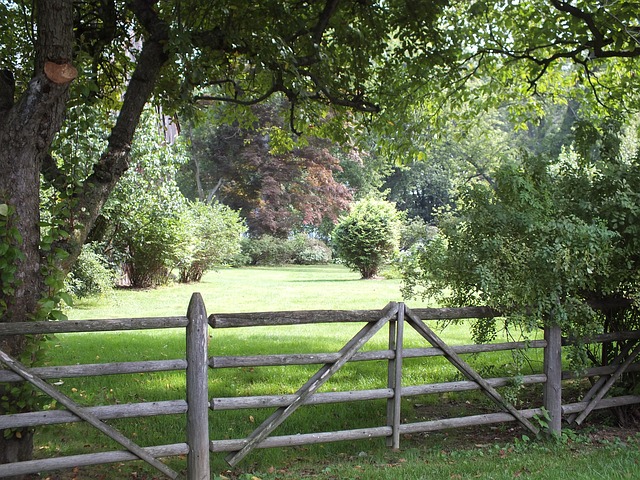In New Bedford, MA, the pursuit of sustainable living has extended to landscaping choices, with eco-friendly fencing materials gaining popularity. This trend is not just a aesthetic shift but a conscious decision to reduce environmental impact. This article explores the diverse eco-friendly fencing options available in New Bedford, highlighting their numerous benefits over traditional fences. From reduced carbon footprints to cost savings and enhanced longevity, these sustainable materials offer an appealing alternative for homeowners seeking to contribute to a greener community.
- Eco-Friendly Fencing Options in New Bedford
- Benefits of Sustainable Fencing Materials
- Local Availability and Installation Process
- Environmental Impact Comparison with Traditional Fences
- Longevity and Cost Savings Insights
Eco-Friendly Fencing Options in New Bedford
New Bedford, MA residents now have access to a growing array of eco-friendly fencing options, aligning with the city’s commitment to sustainability and environmental preservation. Traditional materials like wood, steel, and vinyl are being supplanted by innovative alternatives that offer both aesthetics and ecological benefits. For instance, recycled plastic lumber and bamboo are gaining popularity for their durability and low carbon footprint. These materials not only reduce waste but also minimize the need for chemical treatments often required with traditional wood fencing.
Another prominent eco-friendly option is natural fiber fencing, such as those made from hemp, flax, or jute. These organic options provide excellent insulation and are highly renewable. Additionally, living fences featuring hedges or native plants not only beautify yards but also support local ecosystems by providing habitats for wildlife. Local suppliers and manufacturers are increasingly offering these sustainable solutions, making it easier for New Bedford residents to make environmentally conscious choices when it comes to their fencing needs.
Benefits of Sustainable Fencing Materials
In an era where environmental consciousness is paramount, opting for sustainable fencing materials offers a multitude of benefits for both homeowners and the local ecosystem in New Bedford, MA. These eco-friendly alternatives not only contribute to a greener planet but also provide aesthetically pleasing solutions for property boundaries. Made from renewable resources or recycled materials, they can withstand harsh weather conditions, ensuring longevity while reducing the carbon footprint associated with traditional fencing.
One of the key advantages is their minimal impact on local wildlife and plant life. Unlike certain synthetic options that may leach harmful chemicals over time, sustainable materials are non-toxic, ensuring a healthier environment for nearby flora and fauna. Moreover, they can significantly enhance the curb appeal of any property, providing an opportunity to blend seamlessly with natural landscapes while promoting a harmonious relationship between human habitats and the surrounding natural world.
Local Availability and Installation Process
In New Bedford, MA, eco-friendly fencing materials are increasingly accessible, catering to both residential and commercial projects. One notable option is recycled plastic fencing, which is not only durable but also made from post-consumer waste, reducing environmental impact. Local hardware stores and landscaping suppliers stock these materials, making it convenient for residents and businesses to source them.
The installation process for eco-friendly fences varies depending on the material chosen. Typically, professional installers follow a standardized procedure that includes measuring the area, marking the fence line, digging holes for posts, and securely attaching panels or pickets. This ensures not only a sturdy barrier but also one that aligns with New Bedford’s commitment to sustainability and aesthetic appeal.
Environmental Impact Comparison with Traditional Fences
Eco-friendly fencing materials offer a sustainable alternative to traditional options, with significant environmental benefits. When comparing the impact of these new materials to conventional fences, several key factors stand out. Firstly, many eco-friendly options are made from recycled or renewable resources, drastically reducing the carbon footprint associated with production. For instance, bamboo and recycled plastic fences have minimal environmental harm compared to the extensive logging and petroleum-based manufacturing processes typical of wooden and vinyl fences.
Moreover, these sustainable materials often have a longer lifespan and require less maintenance, leading to reduced waste and lower overall environmental impact over time. Organic, natural barriers like hedges or living fences not only provide aesthetic appeal but also support local ecosystems by offering habitats for wildlife. In contrast, traditional fences can contribute to habitat fragmentation and disruption, whereas eco-friendly alternatives promote biodiversity and ecological balance.
Longevity and Cost Savings Insights
Eco-friendly fencing materials offer more than just aesthetic appeal; they also provide significant longevity and cost savings benefits. These materials, made from sustainable sources like wood, bamboo, or recycled plastics, are designed to withstand harsh weather conditions, making them durable and long-lasting alternatives to traditional fences. Unlike conventional options that may require frequent repairs or replacements, eco-friendly fencing can last for decades with proper care, reducing maintenance costs over time.
Moreover, the environmental benefits translate into financial savings for homeowners in New Bedford, MA. Many of these materials are more affordable than their non-eco-friendly counterparts and become even more economical when considering long-term use. Additionally, local incentives and rebates for installing sustainable fencing can further offset initial installation costs, making eco-friendly options a smart investment for any property owner conscious about both style and sustainability.
